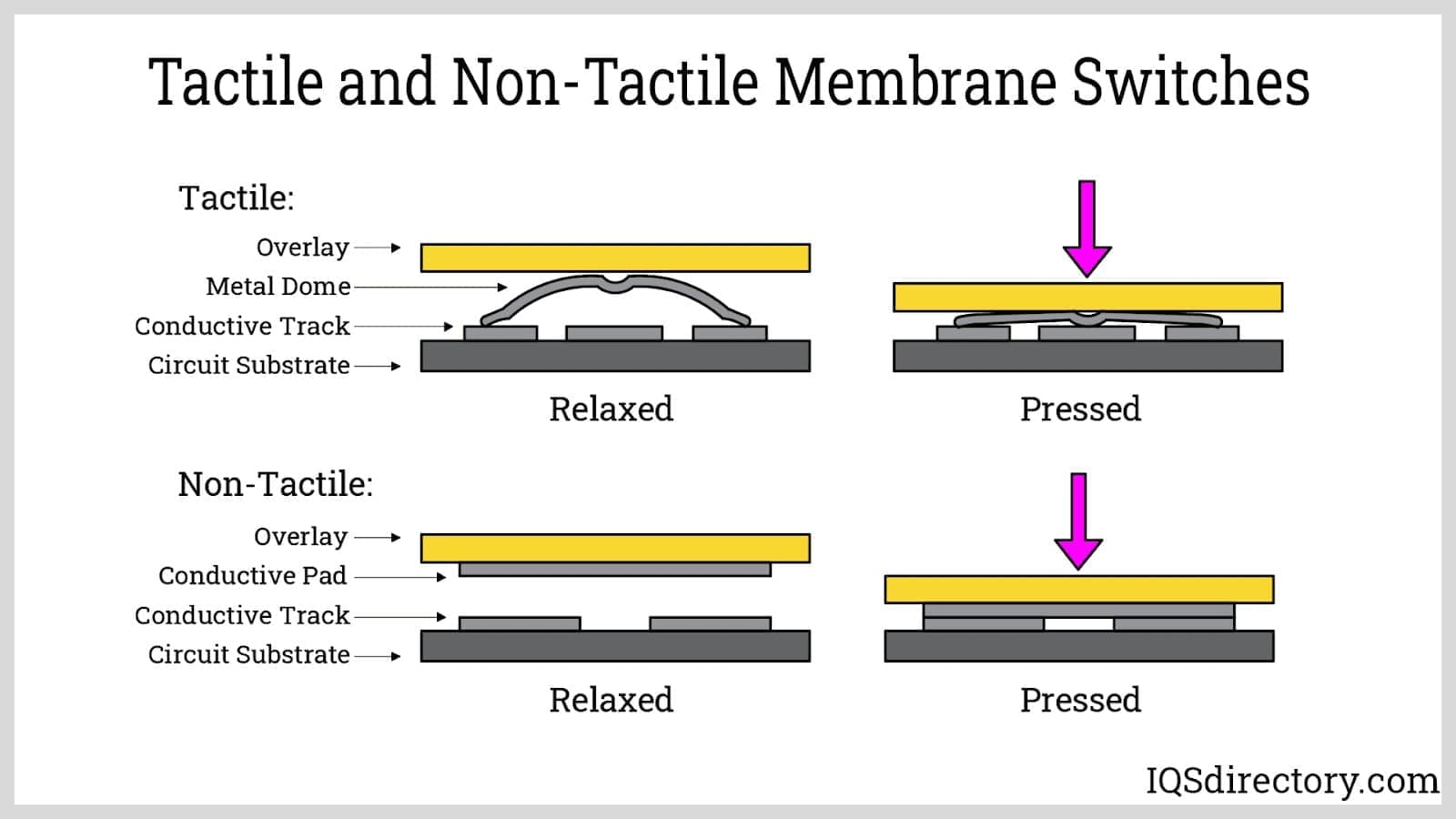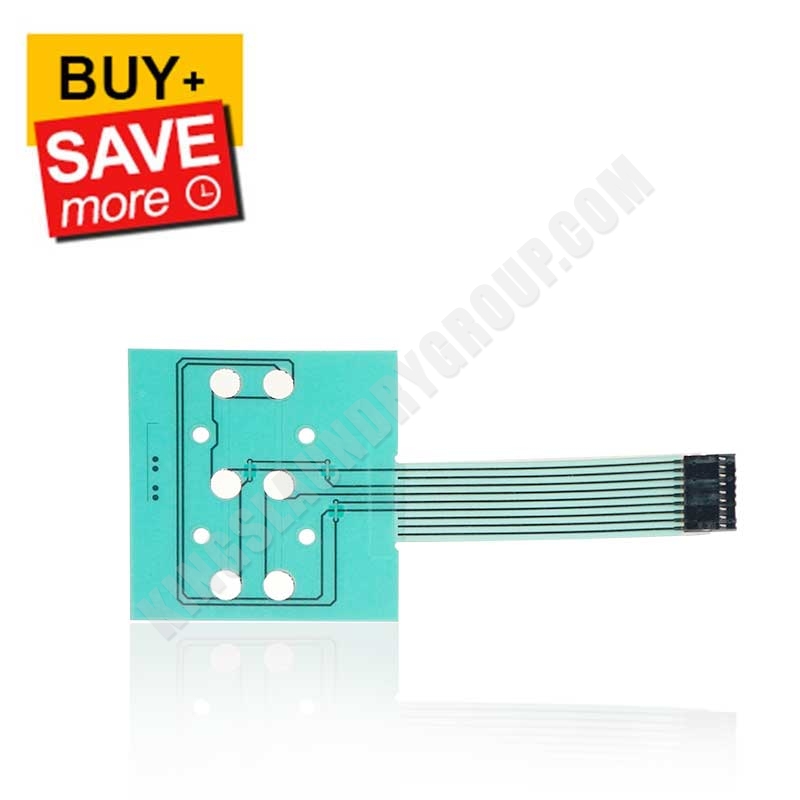Discover the Advanced Styles and Modification Options for Membrane Switches
Discover the Advanced Styles and Modification Options for Membrane Switches
Blog Article
Discover the Future of Control Interfaces: Why Membrane Layer Changes Are Gaining Appeal
As sectors progressively prioritize efficient and straightforward control user interfaces, membrane layer switches are becoming a compelling remedy that combines functionality with design versatility. Their resilience and portable nature make them especially suited for a selection of applications, from health care to consumer electronic devices. With the increase of smart modern technology and sustainability worries, the advancements and capabilities bordering membrane switches over warrant better exam. What details advantages do they offer that could redefine our communications with technology in the coming years?
Recognizing Membrane Layer Switches
Membrane switches are indispensable elements in modern-day electronic devices, acting as interfaces between customers and machines. These switches consist of numerous layers, usually including a graphic overlay, a spacer layer, and a circuit layer. When a user presses a button on the overlay, the leading layer reaches the circuit layer, finishing a circuit and sending out a signal to the device. This simple yet effective mechanism permits seamless interaction with technology.

Resilience is an additional essential attribute, as membrane buttons can be developed to withstand environmental variables such as wetness, dust, and chemicals. This durability makes them excellent for applications in harsh problems. Generally, understanding the structure and function of membrane buttons is essential for appreciating their role in the development of user interfaces in today's technology-driven world.
Key Benefits of Membrane Layer Buttons
Providing a variety of advantages, membrane buttons have ended up being a recommended option in different applications (Membrane Switches). Among the primary advantages is their small layout, making it possible for producers to maximize space in devices without endangering functionality. Membrane switches are light-weight, which is specifically important in portable digital tools

Additionally, these switches supply exceptional durability. Constructed from flexible materials, they are resistant to dust, wetness, and a range of ecological variables, making them ideal for harsh conditions. This resilience typically equates right into a much longer life-span contrasted to typical mechanical buttons.
In addition, membrane switches enable for smooth assimilation of graphics and symbols, using visual versatility and boosting customer experience. Modification alternatives are comprehensive, allowing brand names to produce special user interfaces that straighten with their item identification.
The level surface of membrane layer changes avoids the accumulation of dust and gunk, making them perfect for sanitary settings. Membrane buttons are economical, as they can be produced in high quantities at lower prices, making them available for a wide array of markets.
Applications Across Industries

A myriad of markets are progressively embracing membrane layer switches as a result of their adaptability and performance. These regulate interfaces are specifically prevalent in the vehicle industry, where they are made use of in dashboards and infomercial systems, providing a smooth and user-friendly user interface. published here In the clinical area, membrane changes promote the operation of diagnostic devices and individual surveillance systems, guaranteeing integrity and ease of usage in crucial scenarios.
In addition, the consumer electronics industry take advantage of membrane layer buttons in tools such as microwaves and remote controls, enabling streamlined style and boosted durability. Membrane Switches. The aerospace industry likewise uses membrane layer buttons in cabin controls, where room restraints require efficient and compact design services
Furthermore, the industrial industry utilizes membrane buttons in equipment control panels, using strength against severe atmospheres and guaranteeing operational performance. Retail atmospheres have embraced membrane buttons in point-of-sale systems, boosting customer communication while preserving aesthetic appeal.
Design Fads in Membrane Layer Switches
Developing alongside technological advancements, layout patterns in membrane switches are significantly concentrated on improving user experience and visual charm. Modern membrane buttons are being created for simplicity and intuitive usage, enabling users see this here to browse user interfaces effortlessly. This change in the direction of user-centric design stresses responsive feedback, making certain that customers receive prompt verification of their actions.
In addition, adjustable graphics and colors are coming to be common functions in membrane layer switch designs. This adaptability permits makers to create tailored interfaces that straighten with branding and certain user demands. The consolidation of backlighting is another noticeable pattern, as it not just improves visibility in low-light problems but additionally adds an aesthetically striking element to the total layout.
Moreover, the trend towards thin and lightweight products is acquiring grip, enabling sleeker layouts that can perfectly incorporate into different applications. This change not only boosts visual appeals yet additionally contributes to the total functionality and longevity of the switches. Environmentally friendly materials are significantly being made use of, reflecting a wider motion in the direction of sustainability in item style. These layout fads jointly underscore the growing significance of integrating type and feature in the growth of membrane switches, eventually enhancing the individual experience.
Future Outlook for Control Interfaces
The future of control interfaces is positioned for substantial makeover as arising innovations continue to reshape customer communications throughout different devices. The integration of advanced products, such as adaptable electronic devices and conductive inks, will boost the convenience and performance of membrane switches, making them increasingly versatile to a variety of applications. In addition, the surge of the Web of Things (IoT) will drive need for more intuitive, user-friendly user interfaces that can perfectly integrate with clever gadgets.
As synthetic knowledge and maker learning advance, manage interfaces will likely include more personalized attributes, enabling customers to engage with devices in means that are Discover More Here tailored to their practices and choices (Membrane Switches). This change in the direction of user-centric design will certainly position membrane layer buttons as a key gamer out there, especially in markets like healthcare, auto, and consumer electronic devices
Additionally, the promote sustainability will certainly encourage makers to discover environmentally friendly materials and manufacturing approaches, ensuring that the future of control interfaces lines up with ecological factors to consider. Overall, as innovation proceeds to advance, membrane switches will come to be significantly sophisticated, leading the way for cutting-edge control solutions that improve individual experience and functional performance throughout diverse markets.
Final Thought
To conclude, the increasing adoption of membrane layer switches over highlights their value in the advancement of control user interfaces. Their compact style, longevity, and modification options align with the demands of modern innovation throughout numerous markets. As easy to use user interfaces end up being vital in the context of IoT and AI improvements, membrane switches are positioned to play an essential role. The ongoing fads in the direction of sustainability better improve their charm, guaranteeing that membrane switches will certainly continue to be important to future technological advancements.
As markets increasingly focus on effective and user-friendly control interfaces, membrane layer buttons are emerging as an engaging service that combines performance with design versatility.Resilience is an additional essential attribute, as membrane layer buttons can be made to stand up to ecological aspects such as wetness, dust, and chemicals.Evolving together with technical developments, style patterns in membrane layer buttons are significantly concentrated on improving user experience and aesthetic charm. Modern membrane layer switches are being created for simpleness and intuitive use, permitting users to navigate interfaces easily. These layout trends collectively highlight the expanding importance of combining type and feature in the growth of membrane layer switches, eventually enhancing the customer experience.
Report this page